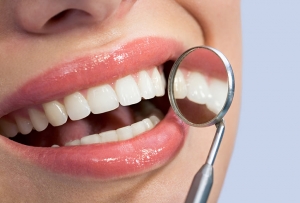Gum Disease Treatment
Periodontal (Gum) disease is an infection of the tissues supporting and surrounding the teeth. It is mainly caused by the accumulation of bacteria from the dental plaque that inflames and damages the gums. This chronic infection attacks below the gum line where it breaks down the attachment of the tooth and its supporting tissues.
Several factors increase the risk of developing gum diseases, the most common of which include tobacco smoking and chewing, systemic illnesses like diabetes or cancer, hormonal changes during pregnancy and menstruation, medications such as contraceptives and anticonvulsants, ill-fitting bridges and fillings that have become defective.
Regular dental check-ups and examinations are important because it is possible to have gum infections without the usual signs and symptoms. They may advance painlessly, exhibiting few evident signs even in the late phase of the disease. This explains the increased risk of losing one’s teeth.
Various indicators may point to some form of gum disease. Symptoms may include red, swollen and tender gums, pus and pockets between gums and teeth, receding gums, gums that bleed during or after brushing, flossing or eating hard food, loose, shifting or separating teeth, bad breath and persistent bad metallic taste in mouth, mouth sores, changes in the fit of dentures and the way the teeth fit during bites.
Periodontal diseases are classified according to the severity of the infection and are traditionally divided into two stages: Gingivitis and Periodontitis.

Gingivitis
Gingivitis (inflammation of the gums) is a fairly common infection that begins with the bacterial accumulation in the mouth. The buildup of plaque causes gums to become red and swollen and bleed easily. It is often a result of poor oral hygiene, inadequate nutrition and some other medical conditions.
When left untreated, gingivitis can progress to Periodontitis.
Periodontitis
Periodontitis is the advanced stage of gingivitis where the severe infection erodes the supporting structures of the teeth. The progressive loss and destruction of the bones, teeth and gums weakens the attachments and loosens the teeth.
Prevention
Daily oral hygiene like brushing, flossing and regular use of an antiseptic mouthwash is critical in preventing of gum diseases. Use fluoridated toothpastes and replace toothbrushes once every one to three months. Maintain a proper diet that ensures proper growth and health of the gums and teeth. Avoid frequent consumption of foods and liquids that contain high amounts of sugar. Sugar allows bacterial adhesion and accumulation to the teeth and the tissues surrounding it. Limit sugar intake to the main meals of the day. Drinking plenty of water can help reduce inflammation by producing more saliva which in turn dilutes toxins from plaque. Regular visits to the dentist and dental examinations will help identify and address the risk and occurrence of infections. Progressive stages of the disease may call for more intensive treatments.


